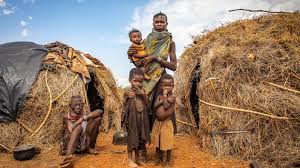Scientist Warns of Severe Impact of Climate-Related Disasters on Children’s Health

Environmental health scientist Frederica Perera from Columbia University has revealed the alarming effects of climate-related environmental disasters, particularly on children’s physical and mental health.
From the devastating heat waves in the United States, Europe, China, and North Africa to the raging wildfires in Canada and other countries emitting harmful emissions, children are among the most vulnerable and affected.
The United Nations Children’s Fund (UNICEF) has labeled climate change as a child rights crisis, estimating that nearly half of all children worldwide, approximately 1 billion, are at extremely high risk due to climate change’s adverse effects. This poses significant threats to their health both now and throughout their lives.
Perera, who founded the Columbia Center for Children’s Environmental Health in 1998, stressed that children’s ongoing development from the fetal period through adolescence makes them particularly susceptible to health risks stemming from climate-related environmental impacts.
She highlighted the disparities in vulnerability among different groups and the early harm caused by these environmental threats, which can have long-lasting effects on children’s well-being.
Speaking on the specific effects of climate change on children’s health, Perera emphasized the need to consider the entire developmental period, including fetal development, infancy, and adolescence.
The developing brain and other systems are highly vulnerable during these periods.
Climate change’s impact on the environment, such as heat waves and wildfire smoke, adversely affects children’s health.
Severe heat contributes to preterm births and causes heat-related deaths and illnesses in infants and children.
Children are also suffering physical injuries and psychological trauma from severe weather events.
Climate change-induced longer pollen seasons lead to more allergies and asthma, while asthma attacks increase due to breathing forest fire smoke.
Additionally, droughts in certain areas of the world cause food insecurity and stunted growth, while the range of infectious diseases spread by insects, such as ticks and mosquitoes, is increasing.
Children’s vulnerability is exacerbated by their developing defense mechanisms, which are not as effective as those in adults in protecting against toxic exposures.
They have less ability to control core body temperature during severe heat waves and are more dependent on adults for hydration and care during early indications of heat-related illness.
Air pollution and smoke from forest fires pose particular risks to children due to their increased exposure, spending more time outdoors, and breathing more air per kilogram of body weight than adults. Their narrow airways are more prone to inflammation, leading to constriction and difficulty breathing.
Climate change also impacts children’s mental health, both directly and indirectly. Children who experience severe storms, floods, and wildfires show elevated rates of depression and post-traumatic stress disorder.
Even those who haven’t directly experienced disasters suffer from climate anxiety, affecting their daily lives significantly.
Perera emphasized that all children are vulnerable, but certain groups are hurt first and worst, with low-income communities and communities of color facing disproportionate exposure to air pollution, severe heat, and extreme weather events. Discriminatory policies like redlining have led to urban heat islands in such areas.
The long-term effects of these early health harms are significant, with respiratory conditions often persisting, reduced intellectual functioning associated with air pollution affecting learning ability, and stress and trauma affecting mental health throughout life.
Perera stressed the urgency of policies and interventions to eliminate fossil fuel emissions, which would result in significant health and economic benefits. By protecting children, society as a whole will reap the greatest rewards.
